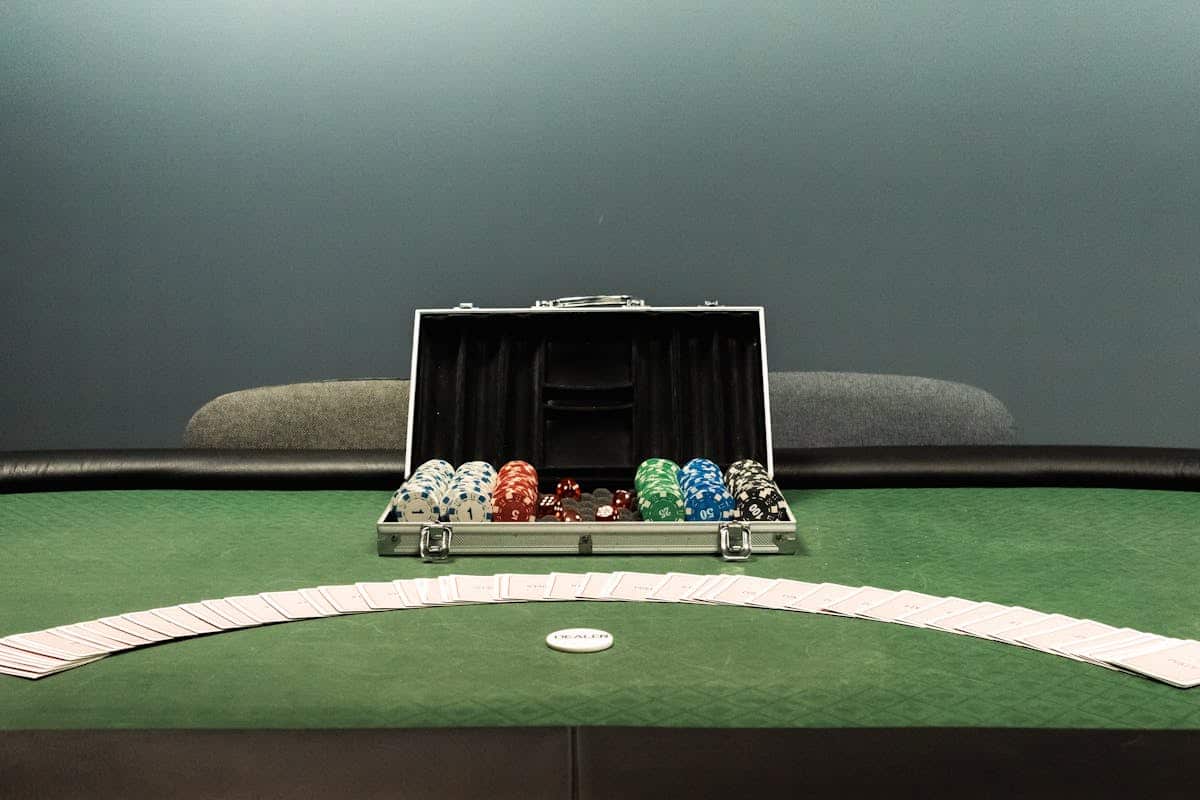Poker isn’t just a game; it’s a rite of passage, a battle of wits, and a testament to strategy. From the smoky back rooms of underground casinos to the glitzy tables of Las Vegas, poker has captured the hearts and minds of players around the world. It’s where fortunes are won and lost in the blink of an eye, and where every hand is a test of nerve, skill, and intuition.
Whether you’re looking to impress at your next game night or aiming to take on the high rollers, this guide is your ultimate roadmap to mastering the art of poker and to learn how to play poker at the ultimate level. Get ready to shuffle up and deal—because in poker, you’re only as good as your last hand.
The Basics: Understanding Poker Hands and Rankings
Before diving into the strategies and tactics, it’s crucial to understand the fundamental element of poker: the hand rankings. Here’s a quick rundown:
- Royal Flush: A, K, Q, J, 10, all of the same suit. This is the holy grail of poker hands.
- Straight Flush: Five consecutive cards of the same suit (e.g., 5, 6, 7, 8, 9 of hearts).
- Four of a Kind: Four cards of the same rank (e.g., four aces).
- Full House: Three cards of one rank and two cards of another (e.g., three 8s and two Kings).
- Flush: Five cards of the same suit, not in sequence.
- Straight: Five consecutive cards of any suit.
- Three of a Kind: Three cards of the same rank.
- Two Pair: Two cards of one rank and two cards of another.
- One Pair: Two cards of the same rank.
- High Card: If no one has any of the above, the highest card wins.

How to Play: The Rules of Texas Hold’em
Texas Hold’em is the most popular and widely played variant of poker, often featured in major tournaments and casual games alike. Understanding its rules is essential for anyone looking to master the game. Here’s a step-by-step guide to the rules of Texas Hold’em:
1. The Setup
- Players: Texas Hold’em is typically played with 2 to 10 players.
- Deck: The game uses a standard 52-card deck with no jokers.
- Blinds: The game involves two forced bets known as the “small blind” and the “big blind.” These are placed by the two players to the left of the dealer to initiate the betting.
- The small blind is placed by the player immediately to the left of the dealer.
- The big blind is placed by the player to the left of the small blind and is usually twice the size of the small blind.
- Dealer Button: A dealer button, or simply “button,” is used to indicate the dealer’s position and rotates clockwise after each hand. The button determines the order of betting.
2. The Deal
- Each player is dealt two private cards face down, known as “hole cards.”
- The objective is to make the best five-card hand using any combination of the two hole cards and the five community cards that will be revealed during the game.
3. Betting Rounds
There are four betting rounds in Texas Hold’em:
a. Pre-Flop
- After the hole cards are dealt, the first round of betting begins, starting with the player to the left of the big blind.
- Players can choose to:
- Fold: Discard their hand and forfeit any chance of winning the pot.
- Call: Match the amount of the big blind to stay in the hand.
- Raise: Increase the bet, which other players must match if they wish to stay in the hand.
b. The Flop
- After the first round of betting, the dealer reveals the first three community cards face-up on the table. This is known as “the flop.”
- A second round of betting ensues, starting with the player to the left of the dealer button.
c. The Turn
- Following the flop and the second round of betting, the dealer places a fourth community card face-up on the table. This card is called “the turn.”
- Another round of betting occurs, again starting with the player to the left of the dealer button.
d. The River
- After the turn, the dealer reveals the fifth and final community card face-up, known as “the river.”
- The final round of betting begins, following the same process as the previous rounds.
4. The Showdown
- If two or more players remain after the final round of betting, a showdown occurs.
- Players reveal their hole cards, and the best five-card hand wins the pot.
- The hand rankings are based on standard poker rules (e.g., Royal Flush, Straight Flush, Four of a Kind, etc.).
- If all but one player folds at any point during the betting rounds, the remaining player wins the pot without having to show their cards.
5. Winning the Pot
- The pot is won by the player with the best hand at showdown or by the last player remaining after all others have folded.
- In the event of a tie, the pot is split evenly among the winning players.
6. The Button Moves
- After the hand concludes, the dealer button moves one position to the left, and a new hand begins with the blinds and dealing process starting anew.
Additional Considerations
- Betting Structures: Texas Hold’em can be played with different betting structures, such as No-Limit, Pot-Limit, and Fixed-Limit, which dictate how much players can bet or raise during the game.
- No-Limit: Players can bet any amount, up to all of their chips.
- Pot-Limit: Players can bet up to the current size of the pot.
- Fixed-Limit: Betting amounts are set at predetermined increments.
Understanding and mastering these rules is essential for anyone looking to excel at Texas Hold’em. As you gain more experience, you’ll develop your own strategies and techniques, making each game a thrilling challenge.
Strategies: Elevate Your Game
Winning at poker isn’t just about luck—it’s about strategy, psychology, and a keen understanding of your opponents. Here are some tips to up your game:
1. Understand Position
Being “in position” means you’re last to act in the betting rounds, giving you an advantage as you can see how others are betting.
2. Bluffing
A well-timed bluff can win you a pot even when your hand isn’t the strongest. The key is to be unpredictable and to understand when your opponents are likely to fold.
3. Reading Your Opponents
Poker is as much about reading people as it is about the cards. Watch for physical tells, betting patterns, and emotional reactions to gain insight into what your opponents might be holding.
4. Bankroll Management
Always play within your means. Set a budget for how much you’re willing to lose in a session, and don’t chase losses. Discipline is key to long-term success in poker.
5. Know When to Fold
As Kenny Rogers famously sang, “You’ve got to know when to hold ’em, know when to fold ’em.” Don’t be afraid to fold a hand if you sense danger—it’s better to lose a small pot than to chase a losing hand.

Variations: Expanding Your Poker Repertoire
Once you’ve got a solid grasp on Texas Hold’em, the world of poker opens up with a variety of exciting and challenging variations. Each brings its own unique twist to the game, requiring different strategies and mindsets. Here’s a look at some of the most popular card games poker variations you might want to try:
1. Omaha
Omaha is often considered the next step for Hold’em players looking for more complexity. Here’s what sets Omaha apart:
- Four Hole Cards: Unlike Texas Hold’em, in Omaha, each player is dealt four hole cards instead of two.
- Two Card Requirement: Players must use exactly two of their hole cards and three of the five community cards to make their best hand.
- Pot-Limit Betting: Omaha is usually played as a pot-limit game, meaning you can bet up to the amount in the pot, leading to some massive pots and intense gameplay.
Why Play Omaha?
Omaha’s four-card hands lead to more possibilities and stronger hands, making it a more dynamic and action-packed game. The emphasis on choosing the best two-card combination from four hole cards adds a layer of strategic depth.
2. Seven-Card Stud
Before the rise of Texas Hold’em, Seven-Card Stud was the most popular poker variant. It’s still beloved by many for its strategic depth:
- No Community Cards: In Seven-Card Stud, there are no community cards. Each player is dealt seven cards, three face-down (hole cards) and four face-up.
- Best Five-Card Hand: Players must make the best five-card hand out of their seven cards.
- Fixed Betting Structure: Seven-Card Stud is often played with a fixed betting limit, adding a strategic dimension to managing bets over multiple rounds.
Why Play Seven-Card Stud?
Seven-Card Stud rewards memory and observation, as you need to keep track of both your own cards and the upcards of your opponents. It’s a game of patience, where carefully building your hand often pays off.
3. Razz
Razz is a fascinating twist on traditional poker, where the lowest hand wins:
- Lowball Format: In Razz, the goal is to make the lowest possible hand, with A-2-3-4-5 being the best hand (the wheel).
- Seven-Card Stud Structure: Razz is played similarly to Seven-Card Stud, with seven cards dealt to each player.
- No Pairs or Straights: Straights and flushes do not count against you in Razz, and aces are always low.
Why Play Razz?
Razz flips the conventional poker mindset on its head, challenging you to think differently about your hand. It’s a great game for players who enjoy the mental gymnastics of poker and want to try something off the beaten path.
4. Five-Card Draw
Five-Card Draw is one of the simplest and oldest poker variants, often used in home games:
- Simple Deal and Draw: Each player is dealt five cards, and after a round of betting, they can discard and draw new cards to improve their hand.
- One Betting Round: After the draw, there’s a final round of betting before the showdown.
- Bluffing and Reading: With so little information available, Five-Card Draw heavily emphasizes bluffing and reading opponents.
Why Play Five-Card Draw?
Five-Card Draw’s simplicity makes it an excellent game for beginners, but don’t be fooled—it can be incredibly challenging to master. It’s all about reading your opponents and making the most of limited information.
5. HORSE
HORSE is a mixed game that cycles through several poker variants, testing a player’s versatility and skill across different formats:
- Rotation of Games: HORSE stands for Hold’em, Omaha Hi-Lo, Razz, Seven-Card Stud, and Eight-or-Better (Seven-Card Stud Hi-Lo).
- Multi-Skill Challenge: Players must be proficient in each game, as the format changes with each orbit at the table.
- Tournament Staple: HORSE is often featured in high-stakes tournaments, making it a favorite among seasoned pros.
Why Play HORSE?
HORSE is the ultimate test of a well-rounded poker player. If you want to challenge yourself and prove your prowess across multiple poker disciplines, HORSE is the game for you.
Conclusion: The Final Hand—Play Smart, Play Bold
Poker is more than just a game of chance; it’s a battle of skill, nerve, and intelligence. Whether you’re at a casual home game or sitting at a professional table, remember that every hand is a fresh opportunity. Stay sharp, read the room, and most importantly, know when to make your move. Armed with the knowledge from this guide, you’re ready to take on the world of poker with confidence. So, ante up, stay cool under pressure, and may the cards be ever in your favor.


















